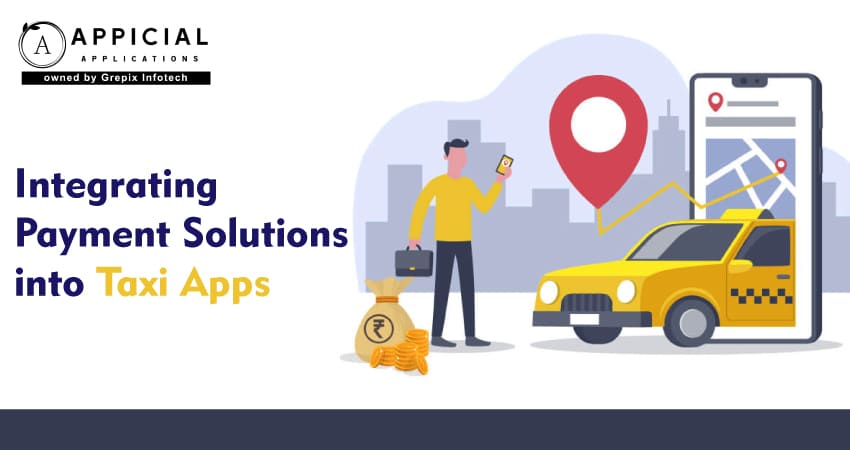
Integrating Payment Solutions into Taxi Apps
In today's fast-paced digital era, the taxi industry has undergone a significant transformation. Gone are the days when hailing a cab involved waving frantically at the roadside or making a phone call to a dispatch center. With the advent of smartphone technology and the proliferation of mobile applications, booking a taxi has become a seamless experience. A crucial component of this evolution is the integration of payment solutions into taxi apps. This integration not only enhances user convenience but also streamlines operations for service providers. This article delves into the intricacies of integrating payment solutions into taxi apps, exploring the benefits, challenges, and best practices associated with this technological advancement.
The transformation of the taxi industry through the integration of payment solutions into taxi apps marks a significant evolution in transportation services. This change offers increased convenience for users and operational efficiency for service providers. By incorporating various payment options such as credit/debit cards, mobile and in-app wallets, and even emerging methods like cryptocurrency, taxi apps have improved the ease and security of transactions. These integrations not only enhance the customer experience by simplifying the payment process but also provide valuable data insights and increase the competitive edge of taxi services. Despite facing challenges such as security concerns, regulatory compliance, and the need for technical expertise, the benefits of streamlined payment processes are immense, pushing the industry towards innovative solutions that accommodate a digitally oriented customer base.
The Evolution of Payment Systems in Taxi Services
Traditionally, taxi services operated on a cash-based payment system. While simple, this method posed several challenges, including security risks for drivers carrying large amounts of cash and inconvenience for passengers without exact change. The introduction of credit and debit card payments provided an alternative, but it wasn't until the integration of digital payment solutions into mobile apps that the industry saw a radical shift.
Types of Payment Solutions in Taxi Apps
1 Credit and Debit Card Payments
Integrating card payments directly into the app allows users to store their card details securely, facilitating quick transactions without the need to physically swipe a card after each ride.
2 Mobile Wallets
Services like Apple Pay, Google Pay, and Samsung Pay enable users to make payments using their smartphone's built-in wallet, adding an extra layer of convenience and security.
3 In-App Wallets
Some taxi apps offer their wallet systems where users can preload funds. This method can incentivize users through promotions or bonuses for adding certain amounts to their wallets.
4 Cash Payments
While digital payments are on the rise, providing an option for cash payments caters to users who prefer or need to pay with cash, ensuring inclusivity.
5 Alternative Payment Methods
Emerging technologies like cryptocurrency payments, though not widespread, represent the forward-thinking integration of innovative payment solutions.
Benefits of Integrating Payment Solutions
1 Enhanced User Experience
Seamless payment processes reduce friction in the user journey. Passengers can focus on reaching their destination without worrying about payment logistics at the end of the trip.
2 Increased Security
Digital payments reduce the need for drivers to carry cash, mitigating the risk of theft. Secure payment gateways and encryption protect users' financial information.
3 Operational Efficiency
Automated payment processing reduces administrative tasks associated with cash handling and reconciliation, allowing companies to allocate resources more effectively.
4Data Analytics
Digital transactions provide valuable data that can be analyzed to understand customer behavior, peak usage times, and payment preferences, informing business strategies.
5 Competitive Advantage
Offering multiple payment options can differentiate a taxi service in a crowded market, attracting a broader customer base.
Also Read: Understanding User Behavior Through Analytics in Taxi Apps
Challenges in Payment Integration
1 Security Concerns
Ensuring the security of financial transactions is paramount. Taxi apps must safeguard against data breaches and fraud, which requires robust encryption and compliance with security standards.
2 Regulatory Compliance
Navigating the complex landscape of financial regulations, including PCI DSS (Payment Card Industry Data Security Standard) compliance, is essential to avoid legal repercussions.
3 Technical Complexity
Integrating payment gateways requires technical expertise. Compatibility issues, testing, and maintenance can be resource-intensive.
4 User Trust
Convincing users to store their payment information within an app requires establishing trust through transparent policies and proven security measures.
5 Global Payment Processing
For taxi apps operating internationally, handling multiple currencies and adhering to different countries' regulations adds another layer of complexity.
Steps to Integrate Payment Solutions
1 Selecting a Payment Gateway
Choose a reliable payment gateway that supports the required payment methods, currencies, and regions. Consider factors like transaction fees, security features, and scalability.
2 Ensuring Compliance
Adhere to all relevant financial regulations and standards. This includes obtaining necessary certifications and regularly updating compliance measures.
3 Implementing Secure Transactions
Utilize encryption technologies like SSL (Secure Socket Layer) and TLS (Transport Layer Security) to protect data transmission. Implement tokenization to store sensitive data securely.
4 User Interface Design
Create a user-friendly payment interface that simplifies the payment process. This includes clear instructions, minimal required inputs, and intuitive navigation.
5 Testing and Quality Assurance
Rigorously test the payment system in various scenarios to identify and fix bugs. This includes testing transaction failures, network interruptions, and security vulnerabilities.
6 Deployment and Monitoring
After integration, continuously monitor transactions for any irregularities. Implement analytics to track performance and user engagement with the payment system.
Best Practices for Payment Integration
1 Transparency
Communicate any fees, surcharges, or policies related to payments. Hidden fees can erode trust and lead to customer dissatisfaction.
2 Customer Support
Provide accessible support channels for users experiencing payment issues. Quick resolution of problems enhances user trust and retention.
3 Regular Updates
Keep the payment system updated with the latest security patches and feature enhancements to protect against emerging threats and improve functionality.
4 Multiple Payment Options
Offer a variety of payment methods to cater to different user preferences, including local payment solutions in different regions.
5 Feedback Mechanisms
Implement features that allow users to provide feedback on the payment process. This can highlight areas for improvement and increase user engagement.
Case Studies of Successful Integration
1 Uber
As a pioneer in ride-hailing services, Uber revolutionized in-app payments. By allowing users to set up payment methods within the app, Uber clone eliminated the need for cash transactions, enhancing safety and convenience.
2 Lyft
Lyft offers multiple payment options, including partnerships with payment services like PayPal and Venmo. Their focus on user-friendly payment experiences contributes to customer loyalty.
3 Grab
Operating in Southeast Asia, Grab integrates local payment solutions and currencies, accommodating a diverse user base. Their GrabPay wallet incentivizes users through promotions and partnerships.
Future Trends in Payment Solutions
1 Contactless Payments
The rise of NFC (Near Field Communication) technology enables contactless payments, which are faster and reduce physical contact a significant advantage in a post-pandemic world.
2 Biometric Authentication
Utilizing fingerprints, facial recognition, or voice authentication adds an extra layer of security and convenience for users during the payment process.
3 Artificial Intelligence and Machine Learning
AI can enhance fraud detection by analyzing transaction patterns and flagging anomalies in real time.
4 Blockchain Technology
Blockchain offers secure, transparent, and decentralized transaction records. While still emerging, it has the potential to revolutionize payment systems in taxi apps.
Conclusion
The integration of advanced payment solutions into taxi apps has become a pivotal aspect of modernizing transportation services. This evolution not only elevates the user experience by offering convenience and security but also streamlines operational efficiencies for service providers. While the journey toward seamless payment integration presents challenges such as ensuring robust security measures and navigating complex regulatory landscapes these hurdles are surmountable with strategic planning and the right technological partnerships.
Appicial Applications is a leading taxi app development company. We understand the intricacies involved in embedding secure and versatile payment systems into taxi applications. Our expertise lies in developing comprehensive taxi app solutions that are tailored to meet the unique needs of your business and your customers. By leveraging the latest technologies and adhering to industry best practices, we help you offer a variety of payment options that cater to diverse user preferences, all while maintaining the highest standards of security and compliance.
Embracing these advanced payment integrations positions your taxi service at the forefront of the industry, ready to meet the demands of today's digitally savvy consumers. With Appicial Applications as your partner, you can confidently navigate the future of transportation, offering a seamless, secure, and superior experience that sets you apart in a competitive market.
Looking out to start your own venture like Uber? Try out our HireMe Uber Clone, the easiest way to kick-start your taxi business.






